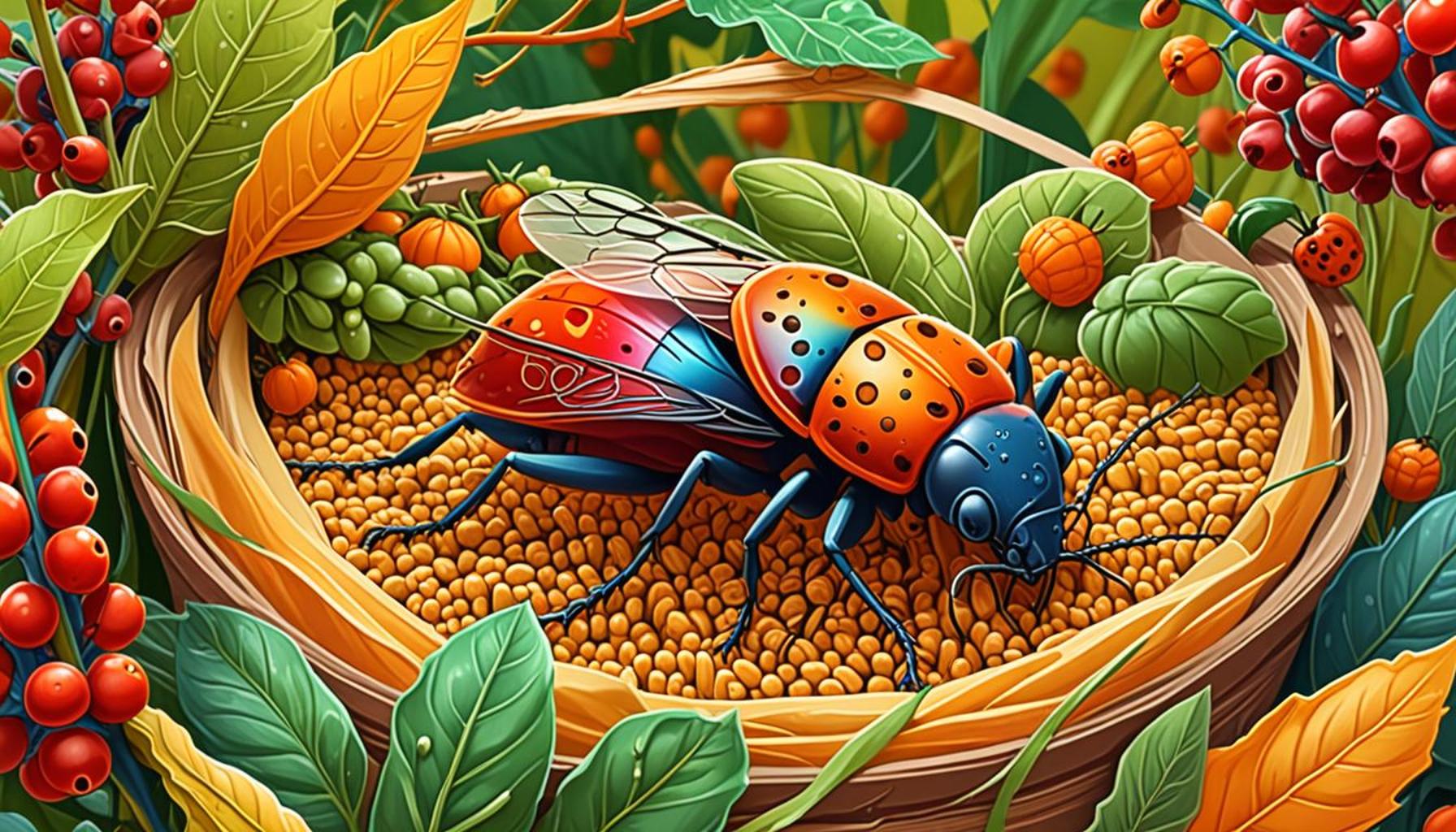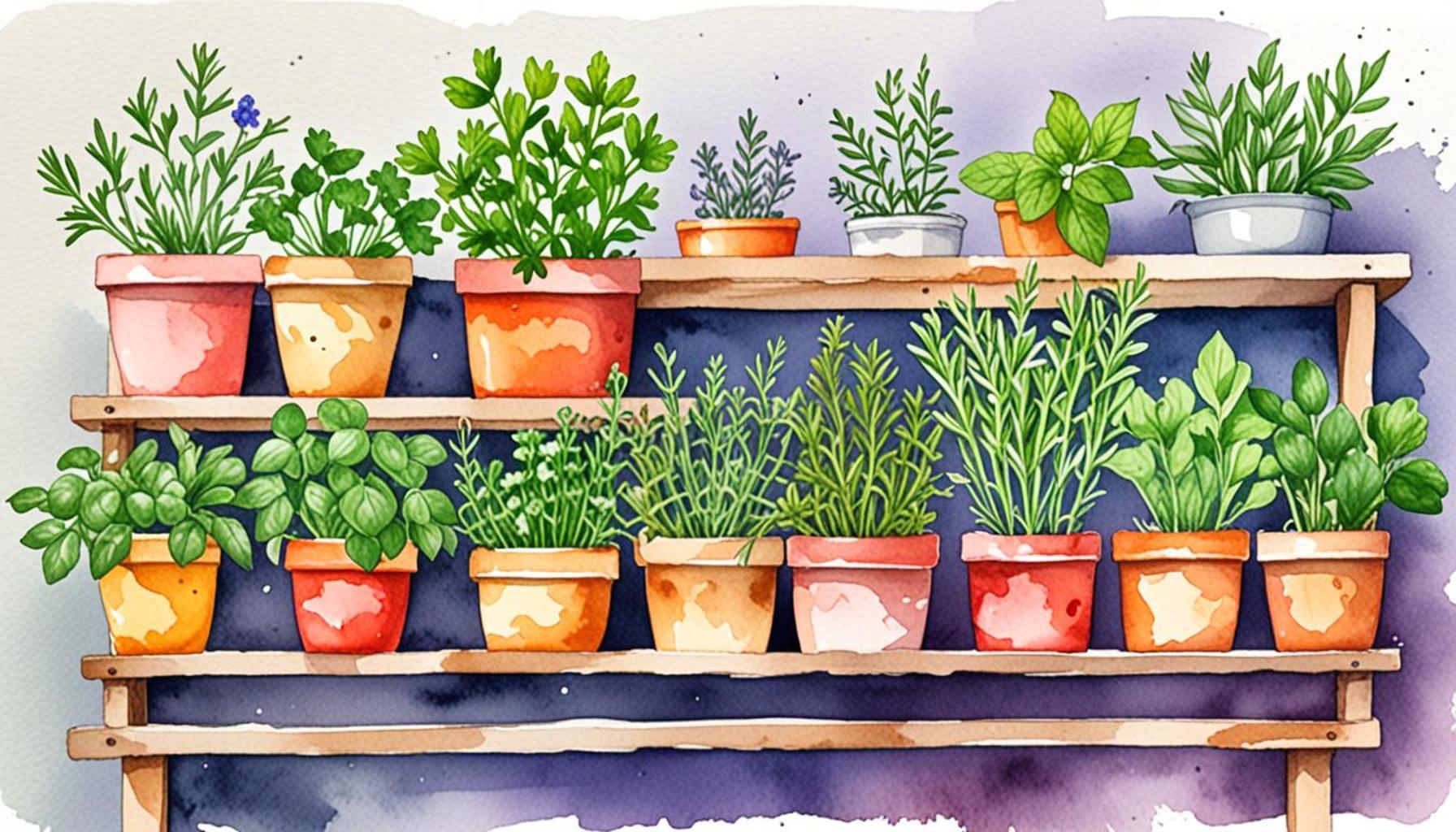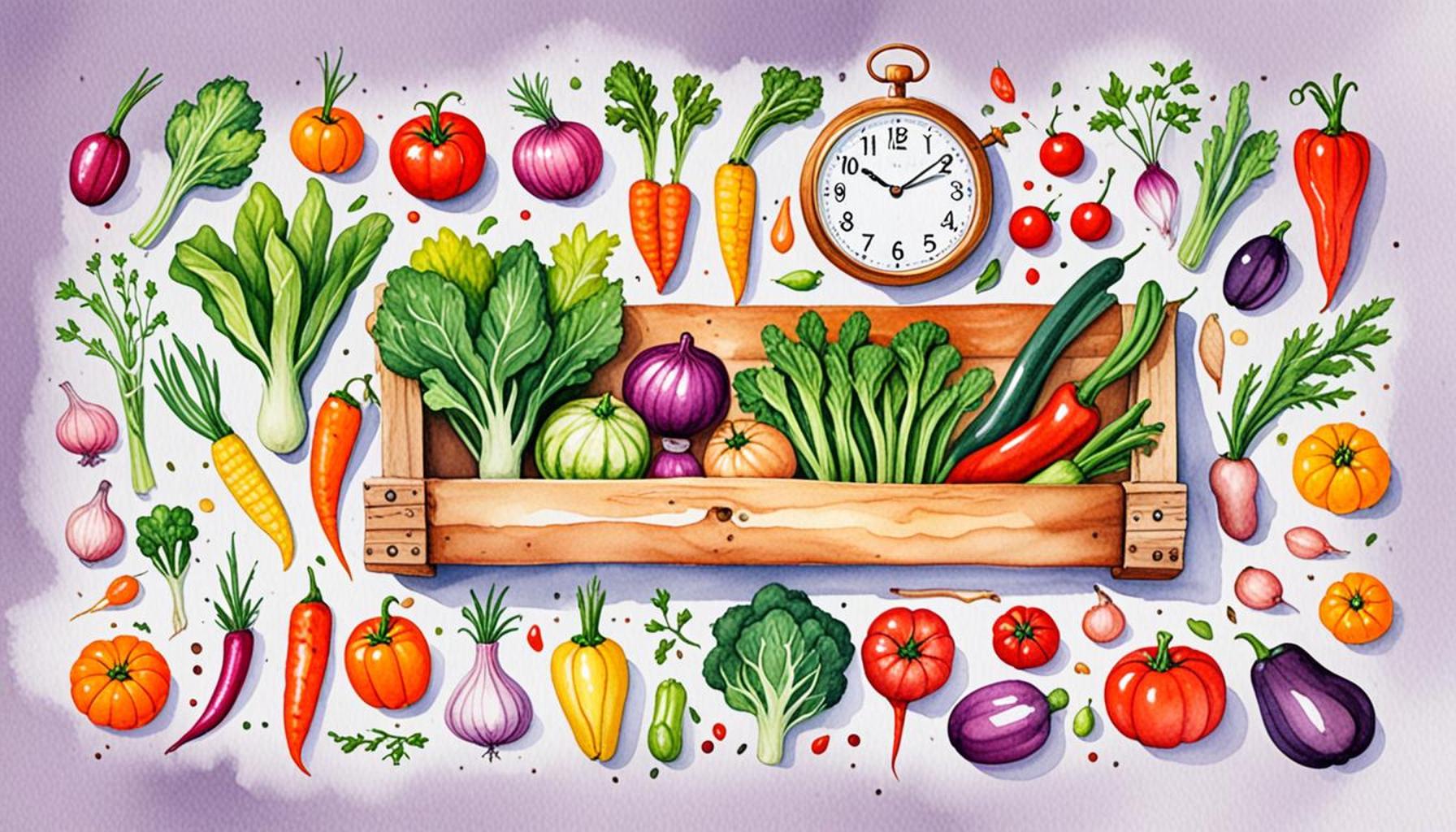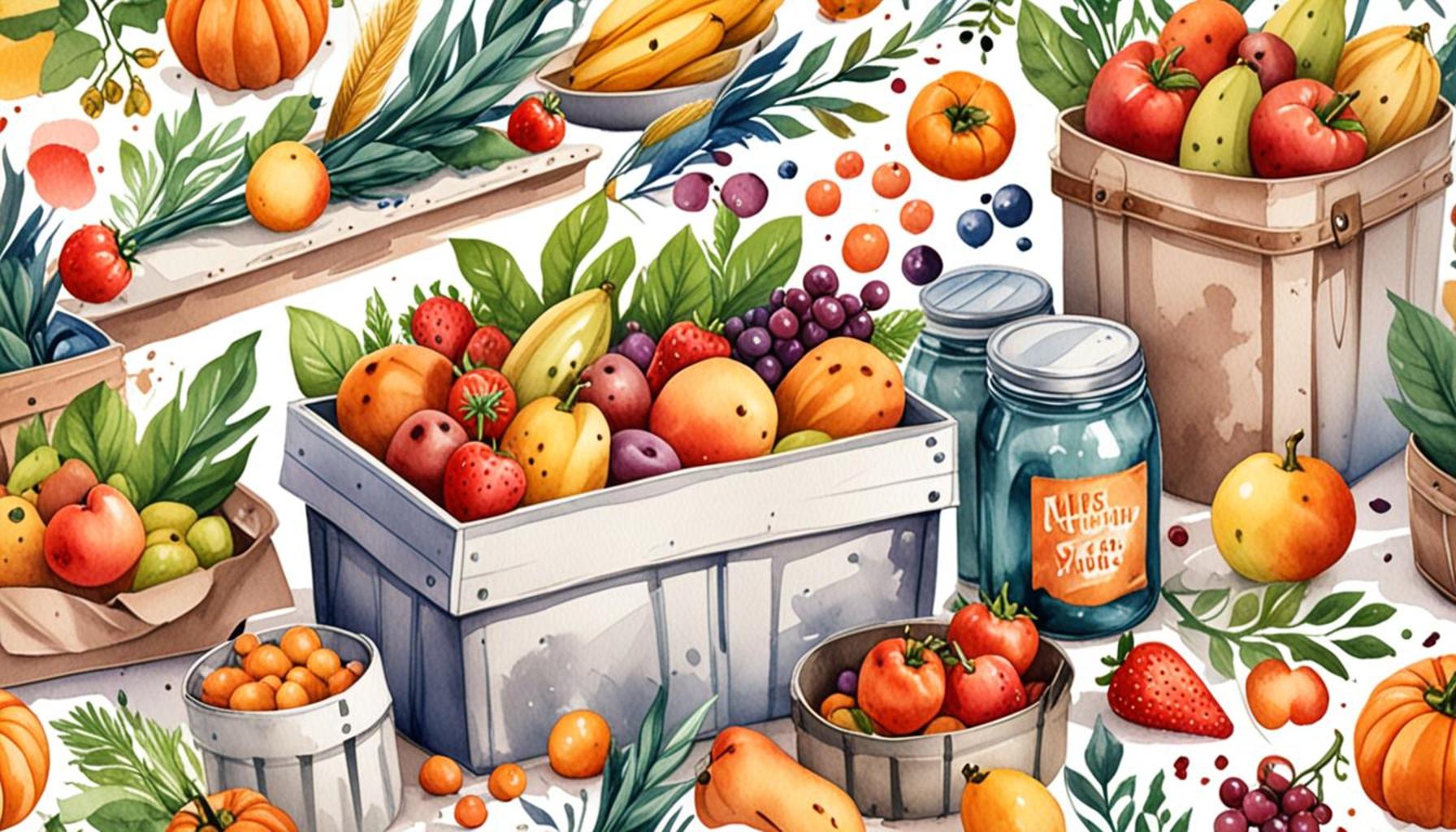How to Identify Pests and Diseases During Harvest: Protecting Your Crop Until the End

Understanding Pests and Diseases in Crop Harvesting
As the harvest season approaches, the thrill of reaping your hard work can quickly be overshadowed by the potential threat of pests and diseases. Identifying these issues early can make the difference between a bountiful harvest and a ruined crop. Being knowledgeable about what to look for is crucial to safeguarding your yield until the very end. The right preparation can mean the difference between a successful harvest and a heartbreaking loss.
During this critical time, focus on several key indicators that may signal trouble:
- Visual Signs: One of the first indicators of potential problems lies in the appearance of your plants. Discolored leaves can range from yellowing, which may suggest nutrient deficiencies or overwatering, to browning edges that may signal drought stress or fungal infections. Wilting plants can be particularly alarming; while it can indicate lack of water, it could also be a symptom of root rot caused by over-saturation and pathogens lurking in the soil. Spotted or blemished fruits can hint at various diseases, including bacterial infections or pest predation, both of which require immediate attention.
- Insect Activity: Pay attention to the insects that may be infesting your crops. Pests like aphids can cause significant damage by sucking sap from plants, thereby weakening them. Similarly, root-eating larvae from beetles can compromise the foundation of your crops. Identifying these pests early on allows for more effective management strategies, possibly including organic pesticides or beneficial insect introduction, such as ladybugs that feed on aphids.
- Wilting or Unusual Growth: Stunted growth can often indicate underlying disease or pest problems. If plants are not growing as expected, it might be time to investigate further. Consider conducting a soil test to assess nutrient levels or checking for conditions conducive to root-borne diseases, which can be exacerbated by poor drainage or compacted soil.
Understanding the implications of these signs can empower you to take action swiftly. Utilize resources like the United States Department of Agriculture (USDA) guidelines and state agricultural extensions to enrich your knowledge further. Many extensions provide images and descriptions of common pests and diseases, which can aid in accurate identification. Additionally, engaging with local farming communities or online forums can also offer valuable insights and support.
With the right information and vigilance, you can protect your crops and ensure a successful harvest. Knowledge is your greatest ally; by staying informed and proactive, you can navigate the challenges that the harvest season presents, securing the fruits of your labor for the long months of winter ahead.
Spotting Early Indicators of Threats
As you immerse yourself in the rewarding task of harvesting your crops, keeping a keen eye out for any abnormalities is essential. The ability to spot early signs of pests and diseases can be pivotal in mitigating damage and ensuring a fruitful yield. Not every pest or disease will announce its presence loudly; often, the most dangerous threats can be subtle, creeping in unnoticed until it’s too late.
To stay ahead of potential troubles, consider monitoring these specific signs and symptoms:
- Changes in Leaf Color: The leaves of your crops can provide crucial clues. If you notice significant yellowing or discoloration, it could indicate nutrient deficiencies or exposure to pest infestations, such as spider mites or aphids. In some cases, a sudden death of leaves, commonly known as *blight*, may suggest a fungal infection, demanding immediate action.
- Presence of Unwelcome Guests: Active pest populations can wreak havoc on your harvest. Insects such as thrips and whiteflies not only consume plant tissue but can also act as vectors for diseases such as viral infections. Conduct a thorough inspection; use a magnifying glass if necessary. Look for their telltale excretions, which might appear as sticky residues on plant surfaces, a sign that these pests have settled in.
- Unusual Growth Patterns: Keep an eye on the overall growth characteristics of your crops. Stunted growth, abnormal curling, or deformed fruits can all hint at underlying diseases like powdery mildew or root-knot nematodes. Such visual cues can help identify issues that may jeopardize your crops’ health.
In addition to visual checks, embrace the practical aspect of monitoring your environment. Soil quality, moisture levels, and weather conditions play integral roles in both pests’ and diseases’ prevalence. For instance, a wet, humid season can lead to a boom in fungal infections, while dry spells may increase the risk of pest invasions.
Utilizing technology and resources is another strategy to enhance your monitoring efforts. Mobile applications and online platforms can help identify pests and diseases by uploading photos of your plants and receiving quick feedback. The USDA also offers a wealth of information tailored to different crops, providing insight into regional pest threats and seasonal variations that can influence disease pressures.
Being proactive in identifying issues during the harvest period safeguards the entire investment of time, effort, and resources you’ve poured into your crops. Armed with the skills to recognize subtle yet critical signs of distress, you can initiate immediate actions, whether through organic interventions or targeted treatments, ensuring that your harvest remains intact until the very end.
| Advantage | Description |
|---|---|
| Early Detection | Identifying pests and diseases early protects your crop’s quality and yield by minimizing damage. |
| Pest Management | Effective management prevents pests from spreading and allows for targeted treatment methods. |
| Improved Techniques | Implementing advanced pest identification techniques enhances overall harvesting quality and productivity. |
| Cost Efficiency | By addressing issues promptly, farmers can save on costly treatments and improve their profit margins. |
To effectively protect your crops during the harvest, understanding the signs of pest and disease infestations is crucial. Farmers should not only focus on damage but also on monitoring the entire plant system. Utilize resources like local agricultural extension services or integrated pest management programs that provide invaluable knowledge tailored to your specific crops and environmental conditions. This proactive approach ensures that you’re not only reacting to issues, but preemptively managing them to secure your harvest’s success. Collecting data over time about pest appearances and crop responses not only informs better practices but also enhances resilience against future challenges. Adopting such methods will not only empower your agricultural practices but also promote sustainable farming techniques.
Analyzing Environmental Factors
Beyond observing the physical signs of pests and diseases during the harvest, a deeper understanding of environmental factors is key. The conditions surrounding your crops can significantly impact pest outbreaks and the prevalence of diseases. For instance, certain species thrive in specific temperatures and humidity levels, making it essential to consider these variables throughout the growing and harvesting process.
Temperature plays a crucial role in the development cycles of pests and pathogens. Many insects, like the corn earworm, reproduce more rapidly in warmer conditions, leading to swarms that can devastate crops within days. Conversely, planting late in the season when cooler temperatures prevail can sometimes help mitigate pest outbreaks by disrupting their life cycles. Understanding how to correlate temperature fluctuations with pest activity can help farmers proactively protect their harvests.
Furthermore, moisture levels are vital to consider. Excessive rainfall can lead to waterlogged soils, creating favorable conditions for soil-borne diseases such as root rot. Alternatively, prolonged dry spells can stress plants, making them more susceptible to infestations from pests like grasshoppers that may target weakened plants. Regularly monitoring soil moisture and irrigation practices can aid in preventing these pitfalls.
Utilizing Integrated Pest Management (IPM)
The adoption of an Integrated Pest Management (IPM) approach is crucial in identifying and addressing pest and disease threats effectively. This holistic methodology emphasizes the use of multiple strategies rather than relying solely on chemical treatments. The core of IPM lies in prevention and early detection, which can be achieved through practices such as:
- Crop Rotation: Rotating crops can break pest and disease life cycles, reducing the overall prevalence of infestations the following season.
- Companion Planting: Incorporating plants that repel pests or attract beneficial insects can naturally protect susceptible crops, providing a more balanced ecosystem.
- Regular Monitoring: Frequent field scouting at different times of the day can help you catch pests in their most active phases and assess plant health effectively.
Additionally, make use of natural predators. Introducing ladybugs, lacewings, or parasitic wasps can effectively help manage pest populations without relying on synthetic pesticides. In gardens and smaller farms, this can lead to a more sustainable and biodiverse environment, supporting crop health until harvest.
Community Resources and Networking
Lastly, never underestimate the power of community. Engaging with fellow farmers, joining local agricultural groups, or participating in forums can provide insights into pest and disease trends observed in your region. The cooperative extension services available throughout the United States offer research-based resources that can empower farmers to identify pests and diseases specific to their locality. These services often conduct workshops and share updates on seasonal pest management practices, which can be incredibly beneficial for optimizing your harvest strategy.
By merging practical monitoring techniques with a comprehensive understanding of environmental factors, utilizing IPM strategies, and leveraging community resources, you can enhance your ability to identify pests and diseases during the crucial harvest phase. This proactive approach not only ensures a better yield but also fosters a more resilient farming system, safeguarding your crops until the end.
Conclusion
As you navigate the complexities of harvest season, the ability to effectively identify pests and diseases is essential for protecting your crops from potential threats. By recognizing the physical signs of infestations and understanding the environmental conditions that foster these threats, you can take proactive measures to safeguard your yield. Incorporating an Integrated Pest Management (IPM) approach not only creates a diverse ecosystem that supports plant health but also reduces reliance on chemical interventions, ultimately resulting in healthier produce.
Moreover, leveraging community resources and local agricultural networks can enhance your awareness and provide valuable insights into trends affecting your region. By collaborating with fellow farmers and utilizing research-based resources from cooperative extension services, you can stay informed about emerging pest and disease challenges and adopt strategies that will benefit your entire farming community.
In conclusion, the harvest period is a critical juncture for every grower, and thorough precautionary measures can mean the difference between a thriving yield and lost profits. Embrace a comprehensive strategy that encompasses environmental analysis, community collaboration, and innovative pest management techniques, positioning yourself to protect your crops until the very end. With diligence and forethought, you can turn potential challenges into opportunities for growth and sustainability in your farming practice.


